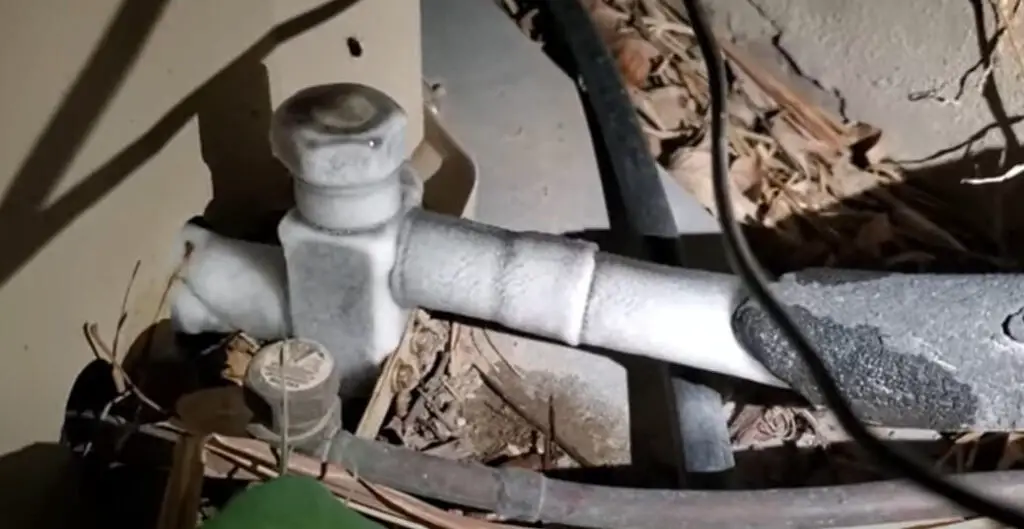Actions to Take When Your AC Pipe Freezes: Key Tips
Actions to Take When Your AC Pipe Freezes: Key Tips
Blog Article
The writer is making a few great annotation on the subject of Have a Frozen AC Line? Here’s How to Fix It in general in this great article just below.

Intro
Uncovering that your AC pipeline is frozen can be concerning, particularly throughout hot summer months when you count on your a/c the most. Comprehending what to do in such a circumstance is essential to stop further damages to your cooling system and ensure your convenience inside.
Recognizing the Causes
Numerous factors can add to the freezing of an air conditioner pipeline. Comprehending these reasons can assist you address the issue effectively.
Absence of Airflow
One common root cause of an icy AC pipe is inadequate air movement. When the air movement over the evaporator coil is restricted, it can create the coil to go down below freezing temperature level, causing ice development on the pipe.
Reduced Refrigerant Levels
Not enough refrigerant levels in your air conditioning system can additionally cause an icy pipeline. Reduced refrigerant degrees can cause the pressure in the system to go down, leading to the cold of wetness on the evaporator coil.
Cold Weather Conditions
In colder environments, freezing temperatures outside can contribute to the freezing of air conditioner pipes. If your air conditioning system is not properly insulated or if there are leaks in the ductwork, cold air can infiltrate the system, triggering the pipe to freeze.
Dirty Air Filters
Dirty or clogged air filters can restrict air movement in your a/c system, bring about different problems, consisting of a frozen pipeline. It's important to replace or cleanse your air filters on a regular basis to make sure proper air movement and stop ice accumulation.
Signs of a Frozen Air Conditioner Pipe
Identifying the indications of a frozen air conditioner pipe is crucial for timely action.
Lowered Airflow
If you discover a considerable decrease in air movement from your vents, it might show an icy pipe.
Ice Buildup on the Pipe
Noticeable ice buildup on the refrigerant line or the evaporator coil is a clear sign of an icy AC pipe.
Odd Sounds from the Unit
Unusual noises, such as hissing or gurgling, originating from your AC device can signal that there's ice existing on the pipe.
Immediate Actions to Take
When faced with an icy a/c pipeline, it's vital to act swiftly to stop additional damage to your cooling system.
Switching off the air conditioner
The initial step is to turn off your a/c to prevent the system from running and aggravating the issue.
Looking for Blockages
Evaluate the location around the indoor device for any blockages that may be blocking airflow, such as furnishings or curtains.
Defrosting the Pipe
You can use gentle approaches like placing towels soaked in cozy water around the icy pipeline to assist thaw it gradually.
Safety nets
Taking safety nets can help stay clear of future occurrences of an icy a/c pipeline.
When DIY Methods Fail
If your efforts to thaw the pipeline or address various other issues are not successful, it's time to contact a professional.
Significance of Hiring a Professional HVAC Technician
A certified HVAC technician has the knowledge and devices required to detect and repair issues with your AC system safely and successfully.
Normal Maintenance Checks
Schedule regular upkeep consult a specialist HVAC service technician to ensure that your air conditioning system is running effectively.
Altering Air Filters
Regularly replace or cleanse your air filters to avoid airflow restrictions and maintain optimal performance.
Insulating Exposed Pipes
If your AC pipelines are subjected to cold temperatures, think about protecting them to avoid cold throughout cold weather.
Looking For Professional Help
If DIY methods fall short to solve the issue or if you're unsure about just how to continue, it's ideal to look for aid from a certified HVAC service technician.
Verdict
Dealing with an icy air conditioning pipeline can be an irritating experience, but understanding exactly how to react can help minimize damages and restore comfort to your home. By understanding the causes, recognizing the indications, and taking timely activity, you can properly deal with the issue and stop future events.
What to Do If Your AC Line Is Frozen
Make Sure All Supply and Return Air Vents Are Open
If you notice problems with airflow, the first thing you should do is check your supply and return vents. Supply vents distribute clean, conditioned air throughout your home. As this air becomes stale, it’s pulled into the return vent, where it’s reconditioned before being sent back out through the supply vent.
When these vents are closed, air won’t flow in the home. Before examining your AC, check the vents in every room and ensure they’re all open.
Check for a Dirty Air Filter
Another possible cause of limited airflow is a dirty air filter. Your air conditioner’s filters catch elements you don’t want to breathe in, such as dirt and dust. Over time, filters can become clogged, ultimately blocking air from flowing in and out. The lack of airflow can then cause the entire coil to freeze and will completely restrict any air from moving through it. The AC may need to be powered off for one to two days to allow the coil to thaw after replacing the filter to allow proper functioning of the unit. This debris can also accumulate on your AC’s evaporator coil, requiring a more serious repair. In general, air filters should be cleaned regularly (about every two weeks).
Assess Your Outdoor Unit
In addition to checking your AC, assessing the outdoor unit is a good idea. Also known as the condensing unit, it works with your interior unit to release heat outside. An issue with the outdoor unit can result in rising internal temperatures.
Overgrown Shrubs or Clogged Leaves
From leaves and twigs to shrubs and debris, there’s no shortage of outdoor elements that can accumulate around your condensing unit. When these elements get lodged inside the unit, they can block airflow. Fortunately, removing the blockage can solve the problem.
Sounds of a Broken Fan
Shrubs and leaves aren’t the only things that can impede your outdoor unit’s airflow. If the fan is broken, the unit won’t be able to properly get rid of heat — which means the internal temperature won’t go down. First, make sure the fan is spinning. If it is, check for the following sounds of a broken fan:
Buzzing Rattling Screeching Hissing Clicking Preventative Measures
Nobody wants to deal with a frozen AC line. In addition to causing problems with your air conditioner, they require professional repairs. On the bright side, there are preventative measures you can take to help ensure this issue doesn’t arise in the first place.
https://www.coopergreenteam.com/blog/what-to-do-if-ac-line-frozen

I have been very fascinated by Why Is Ice On My Outside Air Conditione and I am hoping you liked the new blog entry. If you please set aside a second to share this article if you enjoyed reading it. Thanks for your time. Visit again soon.
Schedule Free Estimate Report this page